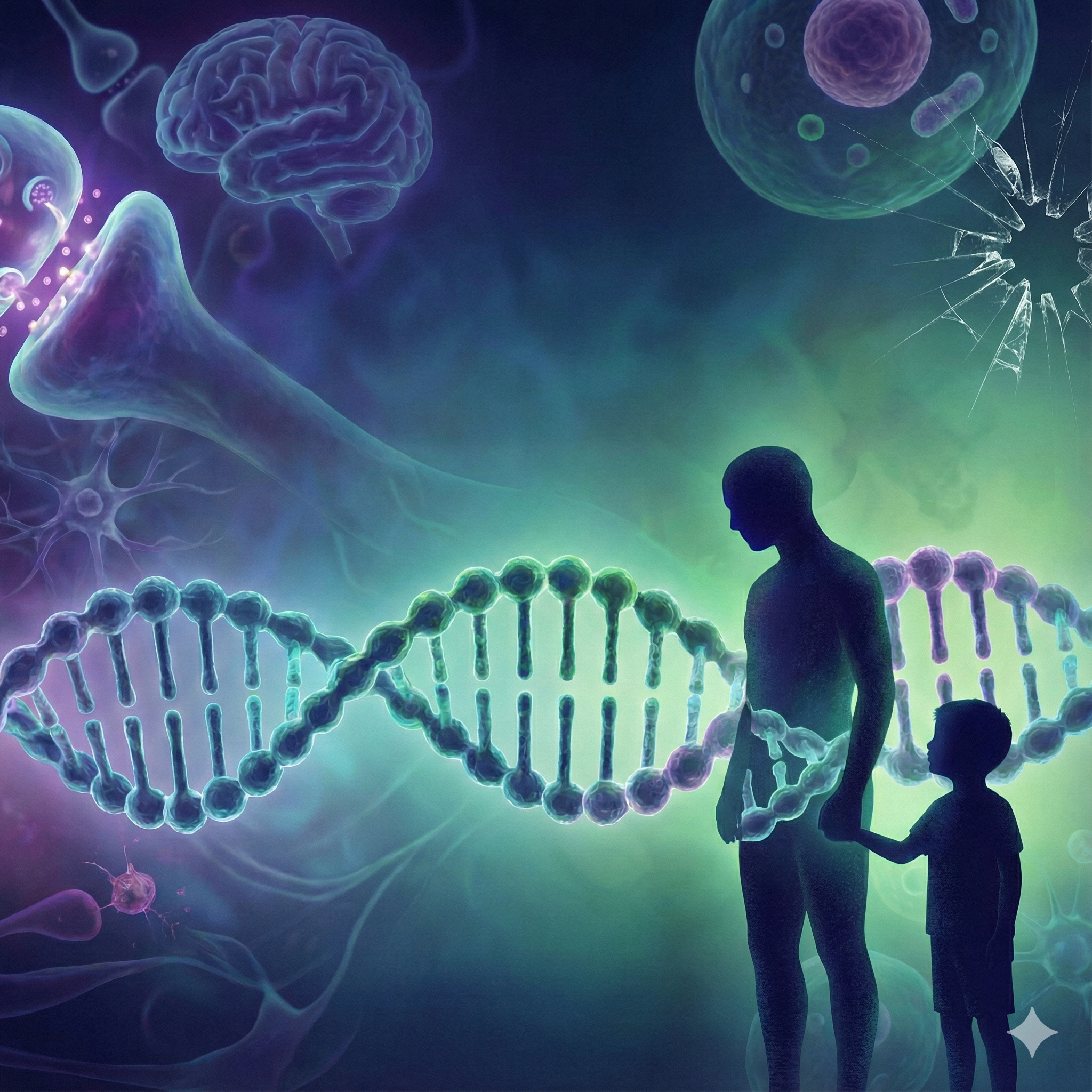Beyond the Mask: The Hidden Face of Narcissism Between Traumatic Wound and Defense
By Massimo Lattanzi¹²³, Tiziana Calzone¹²³
¹Italian Association of Psychology and Criminology (AIPC), Rome, Italy ²Italian Center for Relational Psychotraumatology (CIPR), Pescara-Rome, Italy ³National Observatory on Family Homicides (ONOF), Rome, Italy
Introduction
The term "narcissist" has saturated our daily language, becoming an all-encompassing and often improper label for anyone who displays selfishness or vanity. This trivialization, fueled by social media and superficial pop psychology, obscures a clinical reality that is infinitely more complex and painful. The convergence of psychological research from the last thirty years and the specialized lens of relational psychotraumatology now offers us a radically new understanding: narcissism is not the expression of excessive self-love, but the tragic consequence of love never adequately received, a sophisticated defensive architecture built on the rubble of early trauma.
Science Unveils Two Faces: The Evolution of the Concept from Trait to Spectrum
The scientific understanding of narcissism has undergone a profound evolution, moving away from a monolithic view to embrace a dimensional and multifaceted model. While early descriptions focused on stereotypically masculine traits like dominance and arrogance, we now know that it is a much broader construct. As summarized in a pivotal 2021 review by Joshua Miller and colleagues, narcissism rests on a common "antagonistic core," characterized by egocentrism and a sense of entitlement, which, however, expresses itself in two main phenotypes, formalized as early as 1991 by Paul Wink:
- Grandiose Narcissism: This is the most recognizable mask, characterized by extraversion, boldness, an exhibited (but fragile) self-esteem, and a declared emotional resilience. Research on emotional intelligence, as highlighted in a 2021 systematic review by Sarah A. Walker, reveals a crucial dynamic: these individuals perceive themselves as extremely competent in managing their own and others' emotions. However, when tested with objective tests (e.g., recognizing facial micro-expressions), their performance does not match this self-assessment. This is not simple arrogance, but the symptom of a deep split between an idealized self-image and actual abilities, a first clue to the presence of a hypertrophic "False Self."
- Vulnerable Narcissism: This is the hidden face, often confused with other disorders such as anxiety or borderline personality disorder. Here, the narcissistic core manifests through intense inner suffering: chronic hypersensitivity to criticism, pervasive feelings of shame and inadequacy, social anxiety, and envy. A 2022 meta-analysis, also by Walker, conclusively demonstrated that vulnerable narcissism is consistently associated with severe difficulties in emotion regulation. The prevailing defensive strategy is repression, a desperate attempt to stifle and inhibit the expression of emotions to avoid pain that is perceived as intolerable. This constant effort not only fails, leading to outbursts of anger or deep withdrawal, but in the long term, it devastates mental and physical health.
Do your romantic relationships seem like a disaster? Do you find yourself reliving the same dynamics over and over? It's not your fault. It could be Complex Post-Traumatic Stress Disorder, an invisible wound that manifests in the body and in relationships. The campaign "WHO HEALS IS SECURE" is the first step to regaining control. November 2025. Participate in our free screening for young people (18-30) and couples. Spots are limited, don't wait, book your free consultation, click the link:
The Root of Narcissism: An In-depth Psychotraumatological Reading
If academic research masterfully describes the what, relational psychotraumatology—according to the approach of CIPR (Italian Center for Relational Psychotraumatology) and AIPC (Italian Association of Psychology and Criminology)—explains the why. This perspective, enriched by the contributions of scholars like Lattanzi and Calzone, does not see narcissism as a primary personality disorder, but as a complex post-traumatic adaptation.
Relational Trauma as a Possible Matrix
The genesis of narcissism lies in a developmental environment characterized by chronic relational trauma. This does not necessarily mean overt abuse, but a constant failure of emotional attunement from attachment figures. The child grows up in a context where their authentic needs are ignored, ridiculed, or worse, exploited to meet the emotional needs of the parent. Love is conditional, validation is tied to performance, and the child learns a terrible lesson: their True Self, with its vulnerabilities and needs, is unacceptable and a source of danger.
The Construction of the False Self as a Survival Strategy
To survive in this environment, the child is forced to dissociate from their True Self and build a defensive structure, a False Self. It is here that the two narcissistic phenotypes diverge in their strategies:
- In grandiose narcissism, the false self is an omnipotent armor. It is an idealized, perfect, and invulnerable construction whose sole purpose is to protect the inner core, perceived as fragile and shameful, from any possible wound. The "emotional resilience" is not strength, but the result of a profound dissociation from one's own vulnerable emotions. The narcissistic rage that explodes in the face of criticism is not a sign of strength, but the panic of a defensive system about to be shattered, threatening to expose the underlying traumatic emptiness.
- In vulnerable narcissism, the false self is a mask of hyper-adaptation. The person is constantly attuned to the needs and moods of others, in an exhausting attempt to gain approval and avoid abandonment or attack. Their grandiosity is not exhibited, but hidden in secret fantasies, while their conscious life is dominated by a fierce inner critic, which is nothing more than the internalized voice of the invalidating parent. The symptomatology of the vulnerable narcissist is, in fact, almost completely overlapping with that of Complex Post-Traumatic Stress Disorder (C-PTSD), as described by authors like Judith Herman.
Listen to the podcast on the AIPC Editore Channel on Spotify MIND|CRIME|TRAUMA, “Beyond the mask: the hidden face of narcissism between traumatic wound and defense” click the link: https://open.spotify.com/episode/2c4tCM2ZI2kZM6ESA9tl6B?si=iwMNAXLtQ82Lo_uMd5tFfw
Synthesis and Clinical Implications: From Condemnation to Healing from Trauma
The integration of these two perspectives leads us to an inescapable conclusion: judging or condemning narcissistic behavior is as useless as it is moralistic. The antagonistic and manipulative behaviors are symptoms, not the disease. The disease is the traumatic wound, the disconnection from one's authentic Self.
This radically changes the therapeutic approach. An intervention that merely challenges grandiosity or teaches social skills is destined to fail because it does not touch the core of the pain. A healing journey, like those offered by CIPR, must necessarily be a trauma treatment. It involves:
- Creating a safe therapeutic relationship, where defenses can be gradually lowered without fear of judgment.
- Working on dissociation, helping the patient reconnect with long-denied and repressed parts of themselves.
- Grieving the childhood that never was and the loss of one's True Self.
- Building a stable and authentic sense of identity, rooted no longer in external validation, but in self-compassion and internal acceptance.
Ultimately, understanding narcissism means looking beyond the mask of arrogance or the victim's lament to recognize the face of a child who, in order to survive, had to sacrifice their authenticity.
Beyond the Mask: A Path to Rediscover Yourself
The report "Beyond the Mask: The Hidden Face of Narcissism" reveals a profound truth: behind the appearance of grandiosity and confidence, there often lies a traumatic wound, an ancient pain that forced the construction of an armor to survive. Narcissism, seen in this light, is not a sentence, but a defense strategy that prevents authentic relationships and generates a deep sense of emptiness.
If you recognized yourself in this description, or if you are in a relationship marked by these complex dynamics that cause you suffering, you are not alone. Understanding the origin of that wound is the first step to finally being able to take off the mask and rediscover your true self.
The Italian Center for Relational Psychotraumatology (CIPR) offers a specialized approach to address the traumatic roots of these defenses and support healing. Our professionals in Pescara and Rome are ready to welcome you with personalized therapeutic paths to help you find balance and well-being.
Do not postpone the possibility of embarking on a path of change. Contact us for more information or to book a consultation.
Email: aipcitalia@gmail.com Reference website: www.associazioneitalianadipsicologiaecriminologia.it WhatsApp Phone: 3924401930
We are here for you, to help you look beyond the mask and rebuild your story.
Essential Reference Bibliography
- Herman, J. L. (1997). Trauma and Recovery: The Aftermath of Violence—from Domestic Abuse to Political Terror. Basic Books.
- Lattanzi, N., Calzone, A. (Eds.). Publications and articles available on AIPC Editore and the official website https://www.associazioneitalianadipsicologiaecriminologia.it/. These materials represent the specialized viewpoint of AIPC and CIPR on relational psychotraumatology.
- Miller, J. D., Lynam, D. R., & Campbell, W. K. (2021). Measures of narcissism and their relations to DSM-5 pathological traits: A critical reappraisal. Journal of Personality, 89(1), 88–101.
- Walker, S. A., & Kizia, K. (2021). A systematic review of the relationship between grandiose and vulnerable narcissism and emotional intelligence. Current Psychology, 40(7), 3357–3377.
- Walker, S. A., Krizan, Z., & Roberts, J. L. (2022). Emotion regulation difficulties in grandiose and vulnerable narcissism: A meta-analytic review. Journal of Psychopathology and Behavioral Assessment, 44(2), 295–309.
- Wink, P. (1991). Two faces of narcissism. Journal of Personality and Social Psychology, 61(4), 590–597.
- Winnicott, D. W. (1965). Ego distortion in terms of true and false self. In The Maturational Processes and the Facilitating Environment: Studies in the Theory of Emotional Development (pp. 140-152). International Universities Press.


.-omicidi-familiari-100-maschili-e-meridionali.-legemonia-della-violenza-intergenerazionale-uomo-su-uomo-nel-sud-italia.jpeg)
